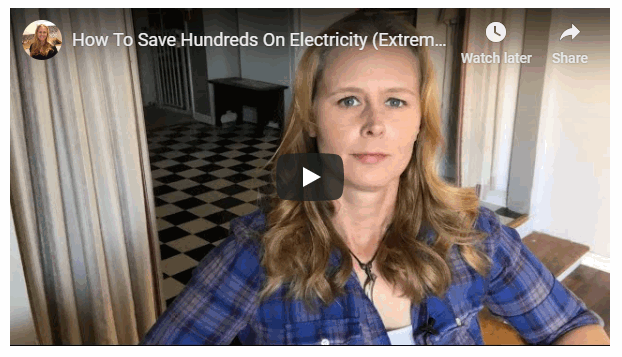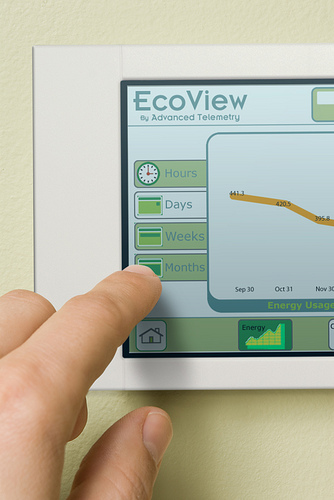Unfortunately, home energy costs are always rising, and electricity is a necessity in the modern world, so frugal-minded consumers should be on the lookout for ways to save energy. Fortunately, there are plenty of ways to do that. Here are five excellent energy saving tips.
Evaluate Your Provider Options
If you live in a deregulated state, you’re in luck: you have the option to take advantage of the competitive energy market and find the best price option for your needs.
First, conduct an audit of your usage to get a realistic idea of what packages will work for you and if you’re eligible for discounts. For example, in Irving, TX, there are Texas electricity plans that offer significant discounts or rebates for staying under a specified usage threshold. Most states have various rebates and options based on their area.
When you find a service provider that works for you, crunch some numbers and evaluate your future plans to determine the best term-length for you. The longer you’re able to lock into a plan, the more money you’ll save now and in the future.
Reduce the Temperature
By making adjustments to the temperature points in your home, you’ll save a lot of money with nearly subtle changes to your habits. Start by setting the thermostat a few degrees cooler during the fall and winter months and take the air conditioning back a notch during the summer.
The overall temperature of the house isn’t the only place to make an adjustment. Using cold water to do your laundry will save hundreds of dollars every year in electricity. Opting for cooler showers makes a big difference to your power bill; it’s also better for your hair and skin and will encourage you to cut your showers short for further savings.
The stove is another area to make small changes for significant savings. If you have a gas stove, keep the flame under the pan. Any flame that wraps around the pan is wasting heat. On an electric stove use, the right size burner i.e. use the small burner for small pans. Rather than using the max setting on your burner, turn the temperature down a couple of notches whenever possible. Also, turn off the burner before the cooking is actually done and let the residual heat finish cooking the job. The same with the oven, it will stay warm and continue cooking for a while if you don’t open the door. Speaking of opening the oven door… don’t, every time you do, it uses more energy to get it back up to temperature.
Another great place to reduce the temperature is on your water heater. The higher the temperature differential between the water and the outside air the greater the energy loss. So if you reduce the water temperature you will waste less heat. Also, a water heater set too high can create a scald risk for small children and the elderly. The U.S. Department of Energy recommends setting your tank-based hot water heater at 120° F, but the default setting from most manufacturers is 140° F, so if you’ve never adjusted the temperature on your hot water heater, it’s probably set to 140° F.
Save Energy By Air Drying Your Laundry
Running the dryer costs a lot over time. Installing a clothesline is a great energy-saving way to offset the costs associated with running a dryer and is far better for the environment. If you lack the space for a clothesline, you can get affordable clothing racks at local department stores.
If you have clothes (jeans, for example), you can toss them in the dryer for five minutes to fluff them up and reduce the stiffness caused by air drying. Turning down the temperature in your dryer and using wool dryer balls also helps when a drying rack won’t cut it.
Reduce Phantom Energy Consumption
Did you know that up to 75% of your power bill may be made up of products that aren’t in use? Phantom energy is the electricity appliances use when in standby mode or turned off. This type of energy consumption makes up $19 billion worth of electricity bills in the USA every year. It’s estimated that phantom energy also accounts for 37% of carbon emissions. In other words, phantom energy consumption is terrible for your wallet and the environment.
To reduce phantom energy consumption, unplug appliances when they aren’t in use. Everything from your toaster to your Blueray player use power even when you’re not using them. To simplify matters, use surge protectors and flip them off when things aren’t in use.
Make Smart Water Swaps
There are plenty of energy-saving smart swaps you can make regarding your water consumption that will ultimately pay for themselves.
First and foremost, updating your water heater or replacing it with a tankless system will make a significant decrease in your power bill. With traditional water heaters (especially those over a decade old), water is heated and stored. Even if you aren’t using the hot water throughout the day, you’re still using electricity to keep it hot.
Tankless water systems are small, wall-mounted boxes that heat water on demand. This means that you’re only paying to heat your water when you’re using the water. The pipes run through the box, heating the water when you turn on the tap.
Another smart swap is to replace faucets and showerheads with low-flow or aerated alternatives. These innovative fixtures mix air with the water, providing the same amount of moisture and coverage while reducing the water consumed and heated. Add in a low-flow toilet, and your electric powered water pump will be doing less work. Not only will you be saving money on your electric bill, but your water bill as well.
By making these simple changes, you’ll see immediate and long-term savings on your electric bill without seeing any significant changes to your daily routine.
You might also like:
- Are Your Bathroom Habits Costing You? 4 Tricks to Save Water and Keep Bills Low
- 4 Home Improvement Projects You Can Save Money On
- How to Save Energy When Using a Water Heater
- Big Family? Top Strategies for Saving on Utilities
- Renting an Older Home? 4 Utility Cost-Saving Updates
- More Energy Saving Articles



